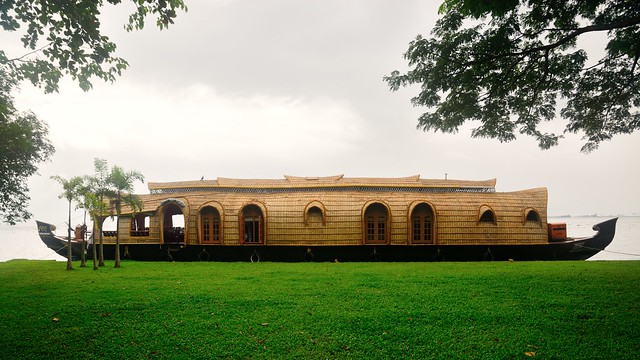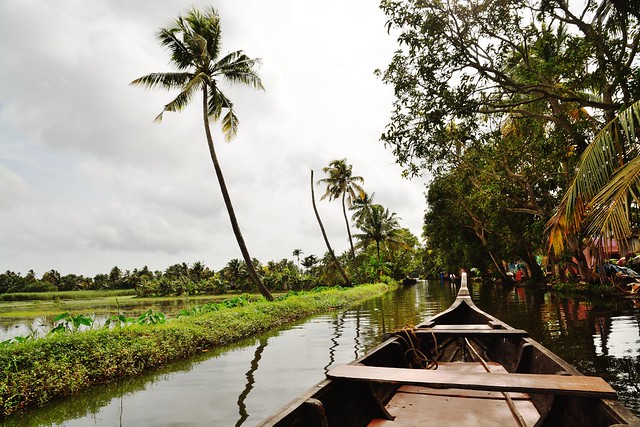It’s been more than six months since I have had a Nikon D7100 for my own and I have been thinking of writing down my thoughts about the camera. However, these six months with the camera have been a bit of an up-and-down journey and it’s only now that I feel like I know the camera enough to write about it.
The D7100 is an enthusiasts’ camera and it will make you earn that title before you can be get along with it. Its 24MP sensor is like that brutally honest friend who wouldn’t flatter you and shine a spotlight on your weaknesses instead. Once you’ve overcome those weaknesses, though, the end result is something that can make a casual snapshot look like a stunning, frame-worthy photograph. The abundance of twiddly bits and sweetest ever handling in this line of Nikons appeal to the enthusiasts and set it apart from the latestD5xxx series that has the same sensor but with much crippled functionality and controls.

I’ve been a big fan of mirrorless cameras since the Sony α NEX came out. Back in December last year we got an Olympus OM-D E-M5 in the family and I wrote this after handling it:
Since I got my own DSLR, I haven’t suffered the covet-thy-friend’s-property syndrome… until yesterday. The OM-D E-M5 is that good.
— Tahir (@code_martial) December 26, 2012
I even dedicated a song to it. The D7100, despite being a big and heavy DSLR with a medieval reflective trapdoor, has purged all desire for OM-D from my system. How did this come to pass? Read on to find out.
The Upgrade
Before the D7100, I had been using the Nikon D90. Though it came out in mid-2008, I only acquired it in early 2010. Since then I also got a Sony α NEX-5, which I later swapped with Sony RX100 in 2012. The RX100 with its tiny 1″ sensor crammed with 20 mega pixels, superb Carl Zeiss optics and new software aids gave the D90 a really tough competition. The gap in IQ between these two cameras was so little that I found myself picking up the RX100 for convenience a lot more often than the D90.
When the D7100 was announced in February this year, its specifications pushed all the right buttons for me – weather sealing, dual SD card slots, more twiddly bits, top-of-the-line AF module and 24 glorious mega pixels without anti aliasing – wow! I decided to go for it since it was clearly superior to OM-D E-M5 (my then favourite) in IQ, I already had lenses for it and the Fuji X-Trans equipped bodies didn’t make a big impression on me.

Handling
Having started out with a Nikon D80, I’ve always liked the hardware controls scattered around the DSLR’s body because they make shooting fractionally (in some cases, significantly) faster. The D7100 takes speedy control to a whole new level.
You get to toggle Auto-ISO on or off with the front command dial while the rear dial, as always, adjusts minimum ISO. Similarly, AF area modes can be switched from the front dial while the rear dial adjusts AF mode. Both these settings previously required digging into the menus. Reviewing shots for shake or focus accuracy is now a 1-click operation. The OK button in the middle of the D-pad can be programmed to zoom in to a pre-defined level of magnification and again zoom out to full area.
Shooting modes can be selected via a dial stacked below the exposure program dial and both dials now have push-button locks to avoid accidental changes. Mirror-up mode gets moved among shooting options, so even less digging through the menus while you’re on the tripod and you want to lock up the mirror. Just switch to MUP mode, click once to raise the mirror and once more to take the shot and drop the mirror down. Simple!
The D7100 also comes with a new Auto-ISO implementation that adjusts minimum shutter speed according to the focal length of the lens attached, instead of keeping it at a fixed value. By default it selects 1/ speed. E.g. for a 50mm lens it uses 1/80s (slowest shutter speed above 1/75). However, you can change it to be 2x or 4x slower/faster than the default. This is the most sensible and most capable Auto-ISO implementation I’ve come across anywhere.
There are many other tweaks and options that make it really quick and non-fussy to use the D7100 with great control over its operation without requiring a visit to the very long menus.
Image Quality
While the D7100 is an undisputed delight on the usability and handling front, I’ve had a really tough time with IQ. The 24MP sensor has a bit of a Jekyll and Hyde personality. Having used a 10MP D80 and a 12MP D90 earlier, I wasn’t prepared for the carnage that viewing 24MP images at 1:1 resulted in. Couple that with the fact that the RX100 with its Carl Zeiss optics gives highly detailed output on the 20MP sensor and I was downright disappointed.
The reliance on PDAF (as against the slower but more accurate CDAF on RX100) leads to quite a bit of focus inconsistency, especially with fast primes. While shooting people, again with fast primes, they sometimes move in the fraction of a second between focus lock and shutter release. I mostly shoot hand-held so camera shake also shows up now-and-then. All these problems become glaringly evident on the D7100. To add to the agony, most consumer zooms don’t appear very sharp at 1:1 on 24MP sensors either.

Over the last few months I have both grown accustomed to ignoring pixel level flaws and become more cautious in my shooting style to minimise such defects. In a way, this also helps while shortlisting keepers from a shoot. Identifying minor differences in contrast or sharpness is much more difficult with lower resolution sensors.
In terms of noise, the sensor again has its quirks. Up to ISO 3200, the results are pretty manageable. At ISO 6400 and above, there’s some low frequency noise which is easily removed without affecting overall sharpness, but there’s also some high frequency chroma noise, which becomes a bit difficult to handle.
All of the above pixel-level agony is only one side of the story, though. Scaled down, the images from D7100 look really great – significantly richer tonality compared to D90 and RX100, massive Dynamic Range (13.7 stops as per DxO Mark) and great ability to resolve detail. All these characteristics come together to give the photos a subjective quality that a few years ago I could exclusively (and easily) find in photos from full-frame cameras.

Final Word
Ever since I got serious about photography, I have been a pixel peeper. My involvement with photography had a lot to do with working the RAW files on the computer, trying to get the maximum sharpness and maximum highlight detail with the least noise, etc. I’ve always wished that the camera would do better than it did.
The D7100 is the first camera that doesn’t leave me dissatisfied. It can show more detail than I usually care about. It has more dynamic range than I can project meaningfully in a JPEG image or print. It doesn’t get bogged down by noise even at ridiculously high ISOs. In short, it doesn’t give me an excuse to blame the equipment.
Instead, it makes my own flaws obvious to me. It doesn’t tolerate sloppy shooting. It makes me want to shoot better things. It makes me want to shoot things better. It wants me to rise up to meet its level of finesse. And it makes my journey towards better photography pleasurable by being such a joyful thing to operate.
